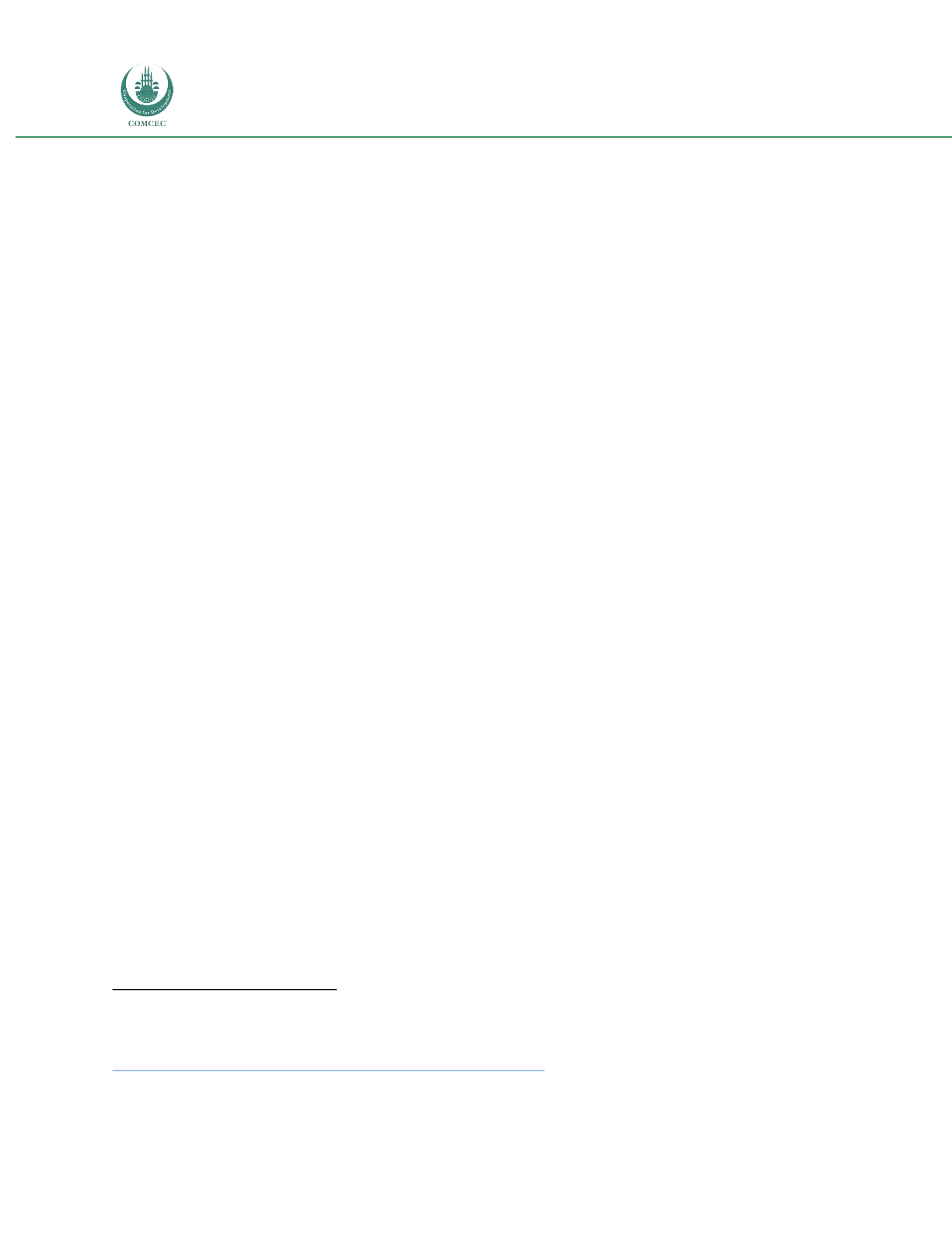

Strengthening the Compliance of the OIC Member States
to International Standards
92
Inspection and conformity assessment procedures for imports have been significantly simplified since
the late 1990s and have become more transparent. Existing decrees spell out details of sampling and
cost, introduce a formal appeals process, exempt frequent importers with a clean record, and allow
GOEIC to recognize and accept inspections conducted in agencies outside Egypt (USAID, 2003). The
main problem is, however, related to the dichotomy of inspection and conformity assessment bodies in
charge of markets for internal supply and for imported goods. As explained previously, the market for
imports and exports is controlled by GOEIC. Meanwhile, EOS and other authorities are in charge of the
internal supply market. Traded products may not be treated equally as conformity assessment bodies
are totally separate and have different work methods.
11
Domestic goods are inspected in laboratories of
the Ministry of Health, the Society for Chemistry, or the Industrial Control Authority, and certified for
conformity by EOS. In the “market” for imports and exports, all of these functions are assumed by GOEIC.
There is a probability that, despite initially common rules and standards set out by EOS, possible
discrimination between domestic and imported goods may occur.
In 2004, Egypt started the process of harmonization with international standards and had entirely
harmonized its 387 mandatory standards in addition to 1,000 voluntary standards by 2005. An
additional set of 1,000 voluntary standards was harmonized in 2006 (Egypt Business Intelligence
Report, 2014). Ministerial decree 130/2005 also clearly separates mandatory standards related to
health, safety, and the environment from other measures. Egypt is also bringing its domestic regulations
in line with European legislation in selected manufacturing sectors and withdrawing any conflicting
national standards to support manufacturers in their exports to the EU (OECD, 2010).
However, there are currently 10,000 Egyptian standards, 1,000 of which are mandatory standards
issued by EOS. Although the plan to expand sectoral coverage and continue the harmonization process is
clearly stated by EOS as one of its missions, there is no precise information on the progress so far.
6.2.2.3
Impact of Technical Assistance and Capacity Building
Since the entry into force of the EU-Egypt Association Agreement in 2004, the EU has provided Egypt
with over €80m in trade-related assistance.
12
The EU being Egypt’s largest trading partner, it is in the
national interest to enhance its quality infrastructure to increase and maintain its access to EU markets.
In light of the EU-Egypt Association Agreement, Ministerial Decree 263/2001 was issued to prepare for
11
This problem has been discussed in a background report on the EU-Egypt Twinning program of quality infrastructure (2014,
unpublished) as a potential cause of discrimination against imported products.
12
Website of the Delegation of the European Union to Egypt
http://eeas.europa.eu/delegations/egypt/eu_egypt/trade_relation/index_en.htm















